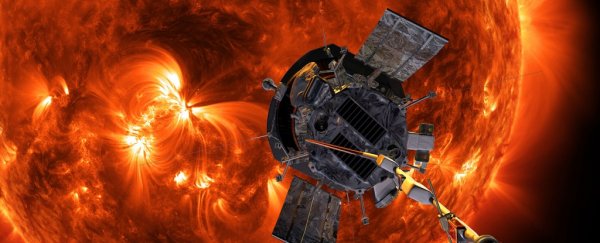NASA's Parker Solar Probe has just made history by making the closest ever approach to the Sun by a human-made object.
On 29 October 2018, at 1:04 pm EDT (17:04 UTC), it crossed the previous, decades-old record of 42.73 million kilometres (26.55 million miles) from the Sun's surface.
"It's been just 78 days since Parker Solar Probe launched, and we've now come closer to our star than any other spacecraft in history," said project manager Andy Driesman of the Johns Hopkins Applied Physics Laboratory.
"It's a proud moment for the team, though we remain focussed on our first solar encounter."
The previous record was set by the German-American collaboration Helios 2 in April 1976. Like the Parker Solar Probe, Helios 2 was a probe sent into solar (heliocentric) orbit to study the processes on the Sun.
Helios 2 also set the heliocentric orbit speed record in 1976, hitting a top speed of 246,960 kilometres per hour (153,454 miles per hour), also in April.
(This is not to be confused with geocentric speed, which is measured relative to Earth, a record Helios 2 also broke in the late 1980s at 356,040 km/h, or 221,232 mph – at a time when Earth and Helios 2 were moving away from each other, making Helios 2 seem to move faster.)
Parker is expected to beat the Helios 2 heliocentric speed record (measured with respect to the Sun) on 29 October at about 10:54 pm EDT (2:54 UTC, 30 October).
It is also expected to beat the geocentric speed record on its final pass around the Sun by a gobsmacking number, hitting an estimated top speed of 692,017 km/h (430,000 mph) – although that won't be until 2025.
Between now and June 2025, Parker is going to complete 24 perihelions, moving between Venus and then looping inside the Sun's corona to get the closest observations we've ever taken of our amazing star.
Parker's first encounter with the Sun will commence this Wednesday, on 31 October, reaching its first perihelion at 10:28 pm EST on 5 November (3:28 UTC, November 6).
